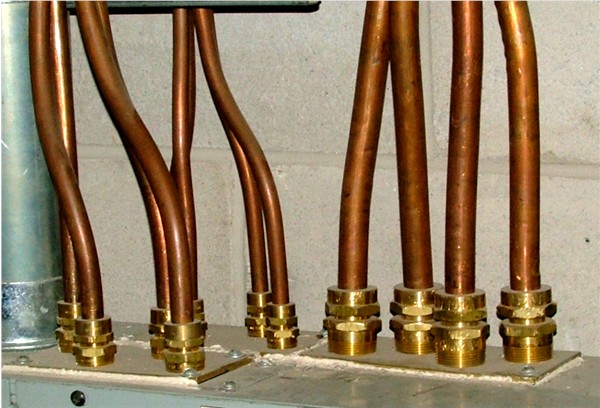Similar cable is used here in the UK, where it is generally known as M.I.C.C. (mineral insulated copper covered)
Sometimes also known as "pyro" which is an abbreviation for "pyrotenax" which is the most well known brand of such cable, manufactured I believe by BICC.
This cable is generally considered to be the safest and most durable wiring system available.
It has a number of applications
1) for life critical systems that must function even if the cable is innvolved in a fire, such as central battery emergency lighting, fire alarms, fire pumps, smoke extract fans etc.
2) as an extra safe wiring method, for general purpose circuits, in places where fire would have especialy serious consequences such as museums and art galleries containing ireplaceable exhibits, or historic wooden buildings, or buildings with insufficient fire exits that cant be improved for historic reasons.
3) Where an increased level of safety is required due to the presence of highly flamable or explosive materials, such as oil refineries, petrol filling stations, explosives works, munitions stores etc.
4) For reasons of appearence, especialy in old buildings were wiring cant be concealed but must be clipped to the surface, Neatly clipped MICC is certainly better looking than conduit or armoured cable, or "twin and earth" (similar to romex) run on the surface.
5) in very hot surroundings where any type of plastic or rubber cable would be damaged, near or above ovens, furnaces or boilers for example.


